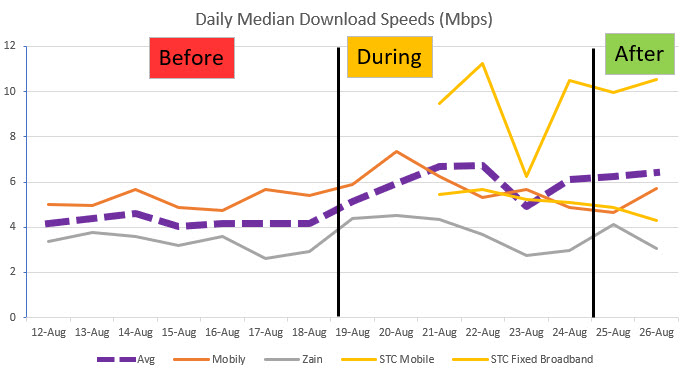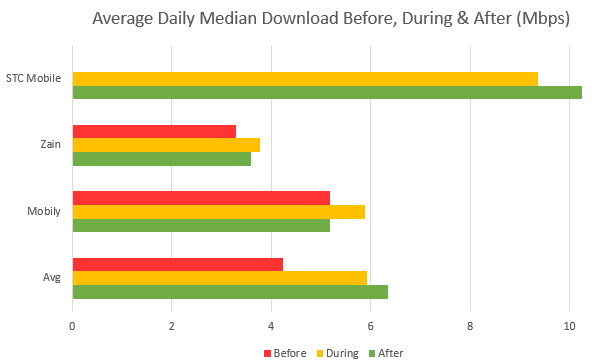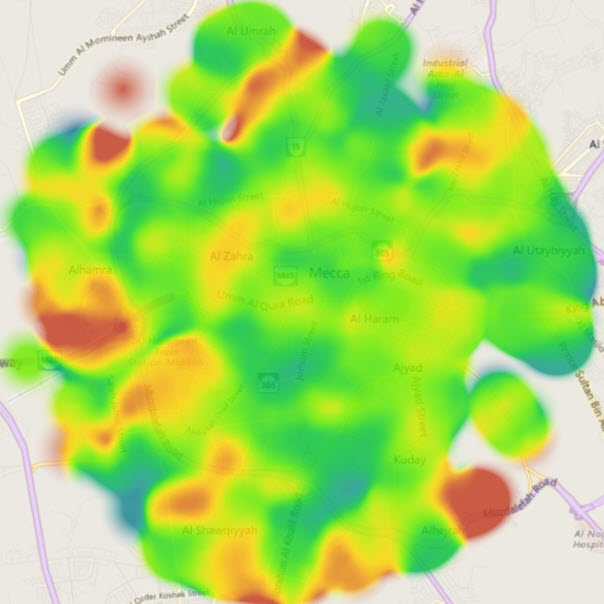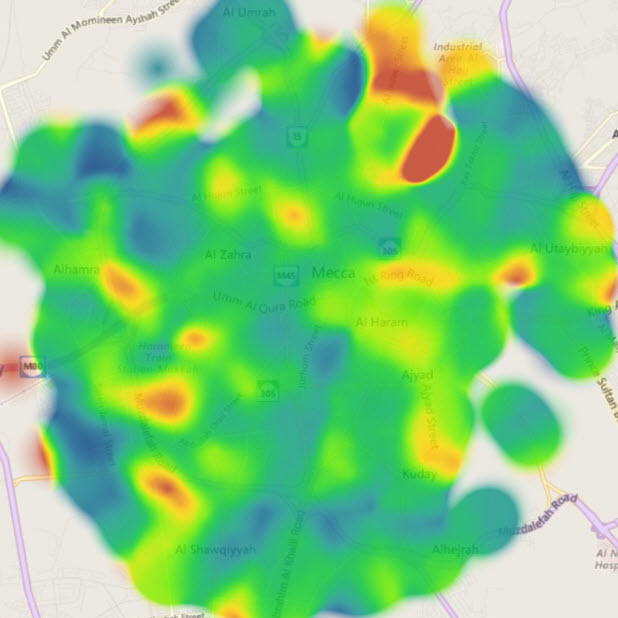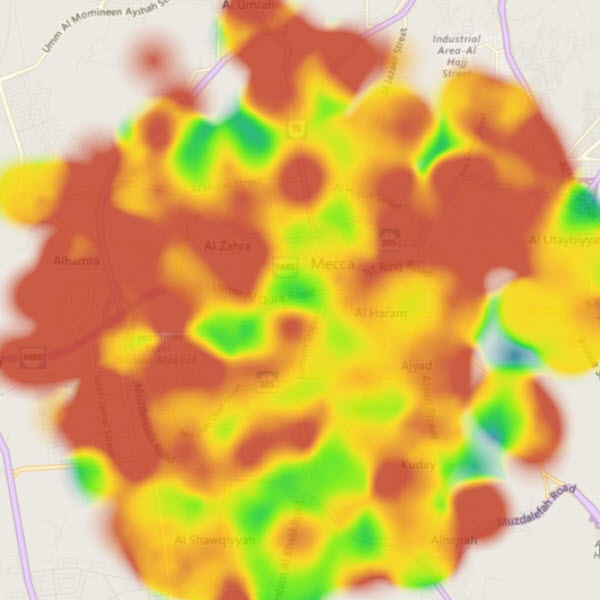Hajj 2018: 2 Million visitors over 6 days
Between 19th and 24th August 2018 over 2 million visitors arrived in Mecca for Hajj. This annual pilgrimage to the holiest city for Muslims is associated with the Prophet Mohammed who is said to have lead his followers there before consecrating it to Allah. It is considered a religious duty for all adult worshippers who are able to undertake this pilgrimage at least once in their lives. This number of visitors more than doubles the usual 1.5 million population of Mecca causing almost unimaginable challenges to the city’s infrastructure. In this article we discuss just one of these challenges : mobile Internet speed and access. It is hard to imagine how the infrastructure could cope with the huge increase in demand.
Hajj 2017: Review
During Hajj in 2017 mobile data demand nearly doubled compared to 2016. Although an increase of 60-70% was anticipated the 100% jump was a surprise. This was attributed to the increase in popularity of YouTube and Snapchat. Despite the increased demand, 99% of calls were successful and 23,000 Terabytes of data were consumed. According to the UN Sustainable Development Goals report published in ITU News from September 2017 this was thanks to the deployment of 3700 ICT specialists and 13,000 2G, 3G and 4G mobile base stations in all Hajj cities. The report does not specify which Telcos were involved. Source: ITU News.
Hajj 2018: The Kingdom’s Initiative to Maximise Mobile Communication During Hajj
King Salman bin Abdulaziz and the Crown Prince Mohammed bin Salman issued a directive “to do everything possible to make it easy for pilgrims to perform the rituals of Hajj”. The initiative’s objective is to allow pilgrims to communicate with their families and enable them to access the digital services available in the Smart Hajj initiative, so that they can enhance their experience and allow them to take advantage of enhanced communication services, as per a release issued by the authorities.
In particular, a number of packages provided by some of the main mobile operators offered their customers 1 Gb for 48 hours. Source: https://www.tahawultech.com
The Challenges
The challenge of providing adequate mobile services during a large event is not simply trying to maintain the current service levels. It is also about balancing the needs of the visitors with key service areas that are essential during the event. Consideration must be given to protecting the critical infrastructure of the region to enable it to respond to serious incidents. One way this can be achieved is to ensure there is resilience and redundancy built in to the infrastructure. Consultation with interested parties is essential to ensure that the steps agreed will meet the essential needs of all concerned. A thorough risk and threat assessment will identify where the effort is required.
It is a balance between being good hosts to the visitors and ensuring a continuity of services for the locals. Short term measures and agreements will be a great help in achieving this balance and the generous provision of 1Gb over 48 hours in Mecca is one such example. This may be the headline initiative but it is clear that much more has been done in many other areas to ensure a successful Hajj.
Telco Infrastructure in Mecca
Mecca has an excellent 4G network covered by a number of major operators. Building on the improvements made for Hajj 2017 this has allowed them to improve the average download speed by 83% between 2017 and 2018. They will continue to improve as they roll out 5G and it is expected that this will be further improved as part of Saudi Vision 2030.
Saudi Telecom Company (STC) has been at the forefront of this with investment in FDD and TDD LTE spectrum assets. The rewards of this investment can be seen in our results which show STC outperform the other providers in our research.
Zain have also been investing in technologies that allow them to extract the best out of their infrastructure. They are also preparing for 5G rollout.
Mobily has partnered with Ericsson to deliver 4×4 MIMO and as with STC and Zain they are preparing a 5G rollout.
As the Telcos continue to improve installed and available capacity so the Internet speeds can be expected to increase.
Speedchecker measurement methodology
Ahead of Hajj, Speedchecker started data collection to gather as many data points in Mecca as possible before / during / after the event. The crowd sourced data samples were collected in the field using mobile phones carried by the pilgrims to Mecca. Measurements were run on mobile networks of the top providers using Android and iOS devices. The measurements were made towards local CDN PoP based in Riyadh. The recorded results are a good proxy for the internet quality users were experiencing in Mecca on their mobile devices. During the 15 days the data collection took place, Speedchecker received over 100,000 data samples and the included stats and analysis are based on this dataset.
Hajj 2018: The Results
The results show that not only did Mecca cope with the extra 2 million visitors they exceeded all expectations. It would be reasonable to expect that speeds would decline by up to 50% during Hajj when compared to the week before or the days after. However, the speed test result reveal that the steps taken in Mecca allowed visitors and locals to enjoy an increase in speed that was continued throughout the following days. Our analysis stops after the 26th August.
The chart shown below shows the median (middle value) of Mobily Mobile, Zain Mobile, STC Mobile and STC Fixed broadband. We only have STC data from 21st August (Hajj started on 19th) and we have separated the STC Mobile tests from the STC Fixed Broadband tests. There is an unexplained drop in speed for STC mobile on the 23rd August. We have included the STC Fixed Broadband to show that the problem only affected STC Mobile customers. Despite this 50% drop from STC the overall trend during Hajj was a gradual increase in download speed.
STC mobile download speeds are more than 50% faster than either Mobily or Zain and this shows that investment in infrastructure yields positive results and benefits to the end user.
The following graph compares how the average daily median speeds of each of the providers changed before, during and after Hajj. The average shows a remarkable increase throughout Hajj and into the following days. Zain’s speeds after Hajj are faster than those from before while Mobily has returned to before Hajj speeds.
Whatever improvements and changes were made to the Telco infrastructure during Mecca the results of the download speeds show that it was a huge success.
Internet speed map of Mecca
Using mobile device GPS data we were able to map internet speeds in Mecca to a high geographic precision. Collected data were normalized and color-coded so that the fastest areas are in red and slowest in dark blue. The outskirts of Mecca which are not colored are out of scope for this study.
Mobily
As can be observed the fastest areas for Mobily are not in the center which can be attributed to increased demand from higher concentration of people.
Zain
The Zain speed map is slightly darker and corresponds with slightly slower internet speeds than Mobily. Yet the centre is faring quite well in comparison with Mobily.
STC
The STC internet speed map looks comparatively much better than Mobily and Zain and proves that internet speeds are well distributed across whole of Mecca.
The internet quality around Great Mosque is better illustrated using more detailed heat map where you can see individual measurements (which are also color coded like on previous maps). The area around the mosque has very good speeds also for Zain, which indicates Zain did not underestimate the capacity needed in the center.
| Mobily | Zain |
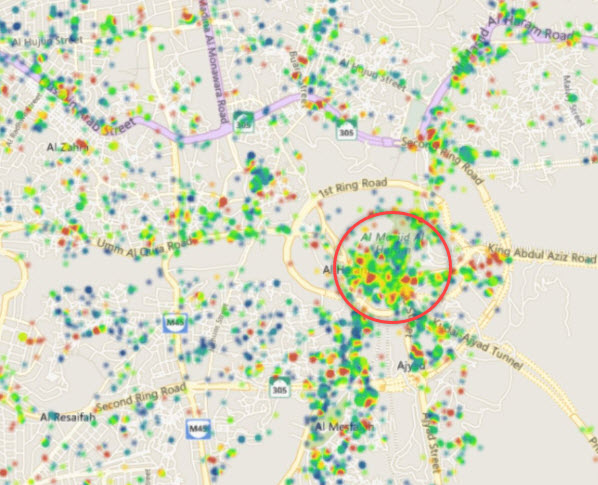 |
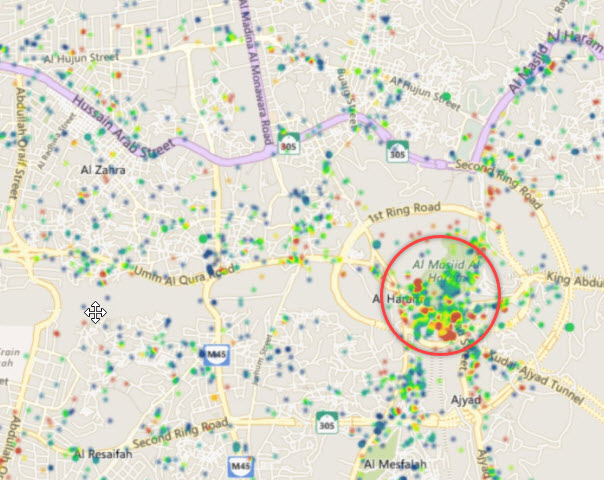 |
Conclusion
The 2 million pilgrims arriving in Mecca in 2018 provided a huge challenge to ensure that the quality of service that visitors and locals expect can be delivered and maintained. We have seen how the demand doubled between 2016 and 2017 and this increase was sure to continue in 2018.
The Saudi Arabia Initiative and the efforts and investments of the major mobile operators has ensured that the quality of the service has not only be sustained but improved. This improvement has continued at least for the few days after Hajj (we have no data beyond this). We don’t know how much of the improvement will be permanent but, with a similar commitment in 2019, we can be confident that Hajj will continue to be a Telco success.
Looking further forward we can see that the Saudi Vision 2030 has ambitious plans that should sustain this for the foreseeable future.
